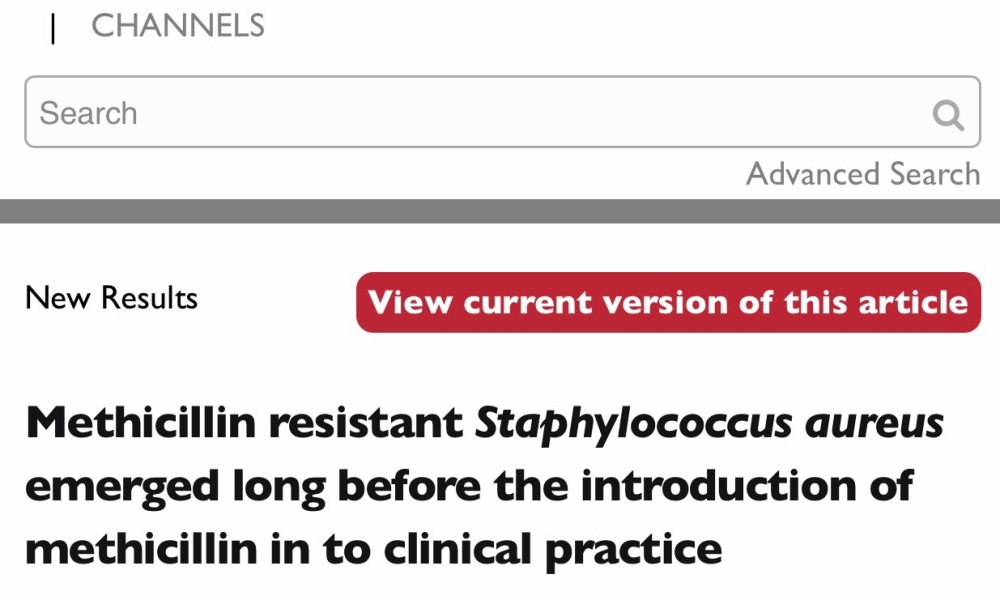
MRSA Archaeology
Methicillin-resistant Staphylococcus aureus (MRSA) was first discovered on 2nd October 1960 by Prof Margaret Patricia Jevons at the Public Health Laboratory in Collindale, London, UK.
Methicillin (or celbenin as it was also known as then) became available for prescription in 1959, and the conventional narrative has always been that MRSA arose as a consequence of rapid resistance development to the widespread use of the antibiotic. I have myself told the story this way to students and other healthcare professionals during lectures on MRSA.
There are a couple of inconvenient truths that one had to close a blind eye to when explaining the initial appearance of MRSA this way:
- The genetic mechanism that conveys resistance to methicillin (termed SCCmec in short) is not native to S. aureus at all, but comes from other less virulent staphylococci. Therefore, the resistance mechanism was already in existence even before methicillin had been developed.
- MRSA had also been found in India and certain East European countries before methicillin became available in those countries.
Now, the question of MRSA’s origin has been tackled in another way, using next generation sequencing and sophisticated (to me anyway) bioinformatics techniques on a collection of the original MRSA preserved by the Public Health England Staphylococcal Reference Laboratory, as well as MRSA (and MSSA) from the Statens Serum Institute in Denmark – the latter used as a representative of early European MRSA. This work is published on the preprint server BiorXiv (more on preprints at a later date – definitely a topic worthy of discussion especially with respect to the contentious issue of availability of scientific research findings), led by my former supervisor at the Wellcome Trust Sanger Institute Dr Matthew Holden – now a full professor at the University of St Andrews in Scotland.
Their findings suggest strongly that MRSA actually arose in the 1940s, likely as a consequence of widespread penicillin use (and to a lesser extent, other antibotics such as tetracycline or streptomycin). Because evolutionarily it is a less efficient mechanism of penicillin resistance compared to penicillinase production, MRSA likely comprised a very small fraction of the overall S. aureus population until they underwent positive selection pressure from widespread methicillin (and oxacillin) use, and no doubt subsequently also from fluoroquinolone use subsequently.
What does this work mean, besides being a piece of “revisionist history”? It also adds to the evidence that antibiotic resistance is a web of unintended consequences, rather than a simplistic cause-effect model that we often find (too much) comfort in.



[…] genes that are lurking in the environment, waiting for the chance to rise to the occasion. As Hsu Li Yang from the National University of Singapore writes, “Antibiotic resistance is a web of unintended […]
LikeLike
[…] genes that are lurking in the environment, waiting for the chance to rise to the occasion. As Hsu Li Yang from the National University of Singapore writes, “Antibiotic resistance is a web of unintended […]
LikeLike
[…] genes that are lurking in the environment, waiting for the chance to rise to the occasion. As Hsu Li Yang from the National University of Singapore writes, “Antibiotic resistance is a web of unintended […]
LikeLike